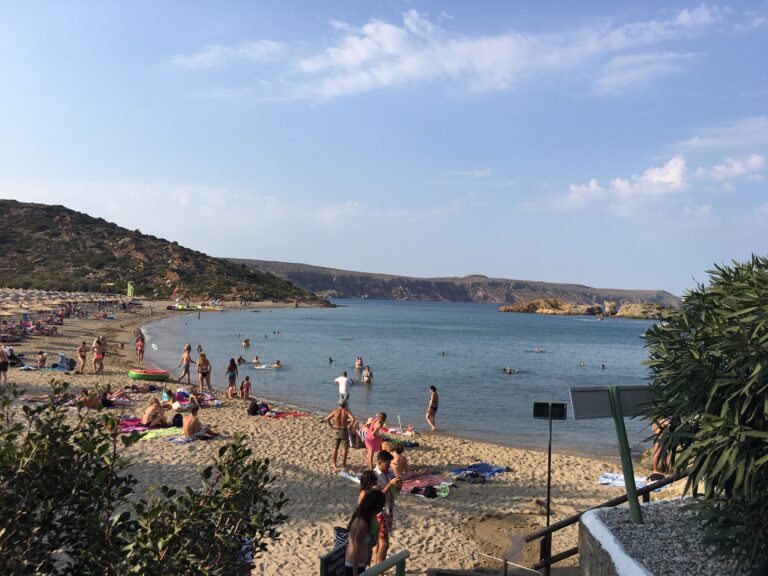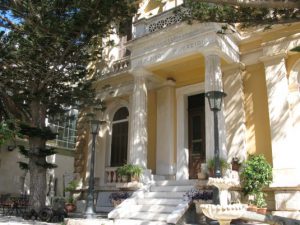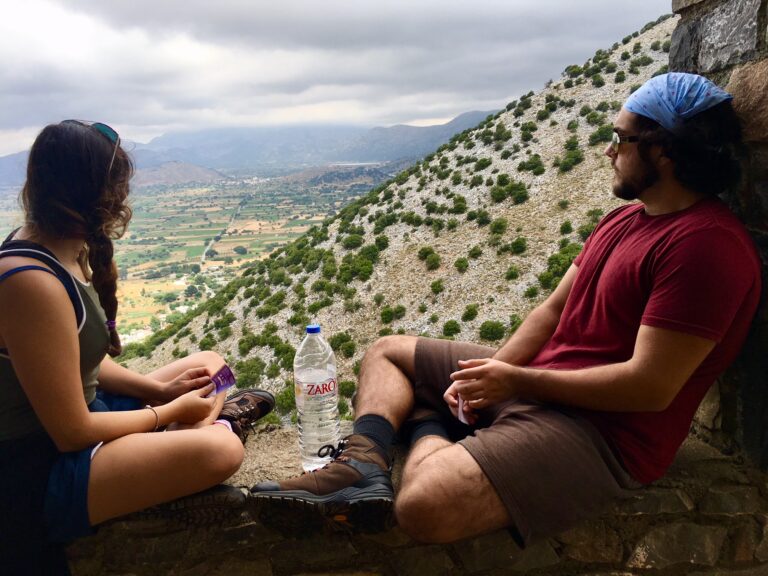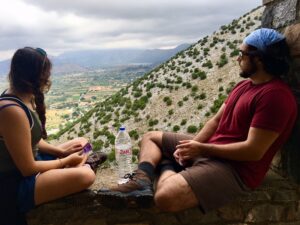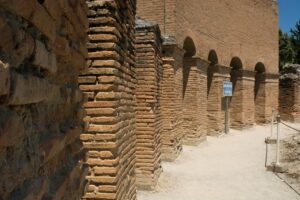I have been writing for Wine Dark Sea Villas for almost two years now, and I am shocked to discover that I have not written about the city of Chania in all that time. I’m flabbergasted. Surely, I thought to myself as I scrolled through old entries, I would have written about Chania? Crete’s oldest port city, its original capital, my first real introduction to Cretan life…surely I would have written about this beautiful town by now. Sadly, I have been remiss in my duties as vacation raconteur, a mistake that I wish to rectify immediately.

Chania has roots that stretch all the way back to the days of the ancient Minoans, the original inhabitants of Crete. Back then, it was known as Kydonia, the source for the word quince, (which is appropriate, considering the prevalence of the fruit). One myth establishes that the ancient city-state was founded by Cydon, a son of Hermes (or Apollo, depending on who you ask), and his wife Akakallis, who was the daughter of King Minos. Another myth states Minos himself was the founder of this powerful port. Archaeologists are still excavating parts of the old town, and have determined that this ancient city-state (for all major cities on the island were self-governing seats of power) was not only an important center for trade, but was also constantly at war with other city-states like Aptera, Phalasarna, and Polyrrinia. Kydonia even has a small appearance in Homer’s Odyssey, though the mention is quite brief.

By 69 B.C., Kydonia had been conquered by the Roman consul Caecilius Metellus, though it was allowed to operate as an independent city-state. Fast forward a few hundred years and we find Kydonia renamed Al Hanim (Arabic for ‘the inn’), during a period known as the Rule of Arabs, once the island itself was conquered and the previous Byzantine rulers were ousted. In 961 AD, the city was reclaimed by the Byzantines, and renamed the city once more to the Greek ‘Chania’. The name has stuck, despite a temporary change under Venetian rule to the Latin ‘Cydonia.’ Since then, the city has changed hands multiple times, from the Venetians to the Ottomans, from them to the native Greeks, to a brief occupation by the Nazis during World War II, and finally, back into the permanent hands of the Cretans, though the capital of Crete was moved to Heraklion in 1971 after thousands of years of turmoil. I’ve done my best to condense a rich history for the sake of clarity, but I highly encourage readers to look into the fascinating and extensive history of this beautiful port city.
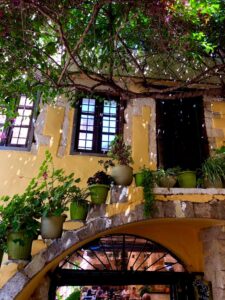
Of course, my own history with this city also has its twists and turns, and my impressions of the place have led to a deepening appreciation for Chania, its people, and its impact on the island of Crete. Every time I visit, I make sure to pay at least one visit to the city. You can never actually park close to the old parts of town, (unless you’re extraordinarily lucky, that is), but the parking garages that lie just outside the borders aren’t too far away to stroll leisurely into town. You may be tempted to visit the beaches there, with soft sand and clear blue water, with strange and curious ruins dotting the coast line and the road leading into the town, the Necropolis of Chania. The path is a straight-forward, uncomplicated one into the heart of the town, where vine-covered trellises grant much-appreciated shade to restaurants. Though the smell of the food might beckon you to stay, as it most certainly does to me whenever I go, I recommend that you take one of the alleyways down to the pier before you eat. There’s time to eat later.

Pick any one of the alleyways that presents itself. As long as it leads downward, you’re going the right way. Wonderful shops line both sides of the street, from the more touristy beach shops and ice cream stores, to the markets and stores that sell gorgeous and intricately painted wooden religious iconography in the orthodox style. Maybe you’ll pick up a set of komboloi, unique to you, that you can flip over your hand as you stare out over the harbor and out into the open sea beyond. It’s perfect for that kind of meditation, after all.
The harbor itself is lined with shops and tavernas of all kinds, though perhaps it is best not to dine at these particular tavernas that tend to overcharge visitors who come from the cruise ships, knowing they have no time to wander the city streets. Once you’ve decided to eat, you’re better off at one of the delicious tavernas you passed on your way down to the harbor. There are more novelty shops along this road, perfect for finding just the right gift for that friend or relative you’ve left behind. You can’t go wrong with a postcard. But the best thing about the harbor is the beautiful crystalline water, a blue-green window into another world where colorful fish often swim amongst the rocks. There are glass-bottomed boat tours that you can take for a leisurely two-hour excursion, and even a submarine ride that can show you the ocean in ways the average tourist has probably not seen before. In all the years I’ve visited, I’ve never taken either voyage, but one day I hope to.

If you’re facing out towards the water, the right hand side of the pier is where an ancient and beautiful mosque lies, a remnant of the Ottoman occupation. On the left hand lies the War museum and the Nautical museum of Crete, both filled with impressive collections that will thrill history lovers. (There are, in fact, several worthwhile museums to visit in Chania, including but not limited to: the Archaeological Museum of Chania in Saint Francis Monastery, the Folklore Museum, the Municipal Art Gallery, the Byzantine/Post-Byzantine Collection, the House of Eleftherios Venizelos, and the Museum of Typography.) Of these museums, I can only really speak in great length about the War museum, a place I highly recommend for anyone who wants to learn more about the heroic Cretan resistance to Nazi occupation.

Explore the alleys leading up and away from the port. Don’t be too afraid of getting lost: you can always find your way back by heading downhill. Up in the twisting alleys, you’ll find art galleries and unique pieces, evidence of Chania’s growing artistic community. If you’re a photographer like me, you’ll find wonderful shots around every corner, from open doorways leading to vine-covered stone courtyards to cats resting in the shade, and if you want to find wonderful, handmade textiles, you’ve certainly come to the right place. Stick around the town for a night of music and fun, as there’s quite an indie scene that’s up and coming in Chania, not to mention the flourishing Jazz scene. (Don’t even get me started on native Cretan music, which you can find in abundance).

Chania has something for everyone, whether you simply want a fun day out in the sun, a day on a boat, an afternoon of exploring museums and shops, or culture. It is rich in a history that is palpable, architecture that entrances, and a people who have pride in their city. Though I’ve been remiss in sharing my love of this enchanting place, it’s better late than never.
By Katarina Kapetanakis



















